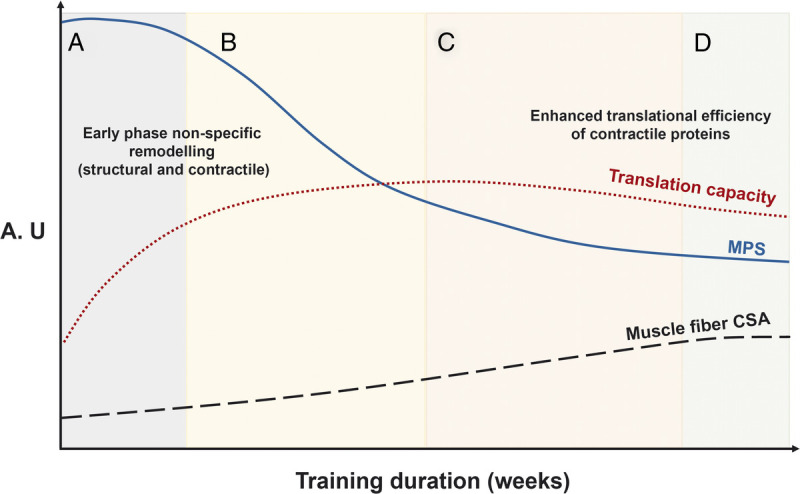FIGURE 3.

A proposed framework of changes in MPS, translational capacity, and muscle fiber CSA in response to RET. The overarching concept is that initial increases in MPS are a biological response to support remodeling of damaged muscle protein and eventually muscle hypertrophy. A, The early-stage increases in MPS are sustained partly by a concomitant elevated translational capacity to support the remodeling of damaged structural and contractile elements of the muscle proteome. B, After the attenuation of exercise-induced muscle damage, there is a reduction in the contribution of MPS to the remodeling of proteins related to the structural and architectural apparatus toward contractile muscle proteins. C, After a relatively short period of time, the rates of MPS are subsequently regulated by the adaptive increase in translational efficiency. D, The result is a detectable increase in skeletal muscle size and mass. All these responses are designed to support an expansion of the muscle protein pool, that is, fiber CSA. The schematic and legend are adapted (with permission) from McGlory et al. (53). A.U., arbitrary units.
